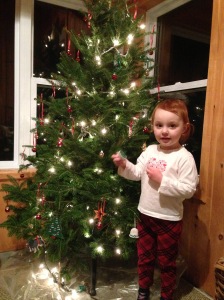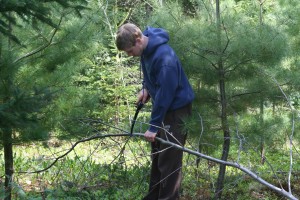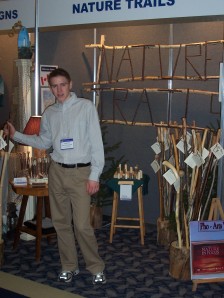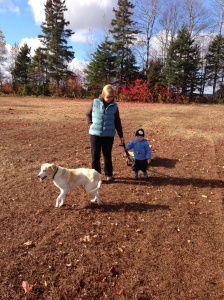Each and every year when I go to the woodlot to cut my annual fire wood, I inevitably come across pieces of wood that I wish I could use for something besides burning. Trees often hide unique grain characteristics that can be so beautiful if recognized and separated for higher end use. Sometimes, I see them when they are still in the log and other times I don’t see the unique characteristics until the wood is split. It had always bothered me to burn pieces of wood that I know had some beautiful and interesting grain or color.

Rough split pieces, showing the figure in the wood, are salvaged from the fire wood pile. These are cut into rough strips in preparation for the table saw.
Over the years, I tried many time to find someone who would be interested in a taking the one or two logs that I would come across each year while cutting my firewood. Every time the answer was the same, one or two logs was not enough volume to interest anyone. I would often leave them lying in the woodlot hoping I could find someone who would want them but I never did. So eventually I would have to give in and cut them into short furnace length pieces.

The rough strips are made into long squares on the table saw. In turn these squares will be cut into short squares called “blanks”. These pieces show the “curly” figure in the wood.
Curly maple was the one characteristic that I came across most commonly. This wavy grain is found most frequently in Red Maple. Unfortunately, it can not be detected until the tree is felled and a piece of bark removed. I know that this “curly” characteristic in the wood will make some beautiful hand crafts. Even after splitting the wood, which really shows this characteristic, I would set pieces aside and not want to burn them. I would visit local wood artisans but still no one was interested in these small pieces, mostly because of the extra work involved in trying to make these small pieces into something.
But one day it hit me, if no one else is interested in these pieces of wood, maybe I could make them into something. Release their inner beauty and let people see the magnificence of nature. But what could I make? I always want to see trees put to their best end use. Now it is my turn to try to come up with something. And come up with something I did! Wooden pens! I have a hand made wooden pen that was given to me many years ago. I thought this would be a perfect use for these beauties of nature. Instead of a brief moment of heat in my house, I can now create a piece of functional art that will last generations. This is one more way in which I can share in the bounty and spirit of Watts Tree Farm with others.
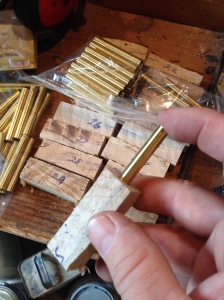
The pen blanks are drilled and a metal insert is glued into each piece. It takes two pieces for each pen. Every effort is made to keep the two pieces from the same piece of wood in order to have the top and bottom of the pen match.
Many of the pieces of wood make it to my basement as firewood. I inspect each piece before it goes into the furnace to determine if it has any qualities in it that will make into a beautiful pen. The good ones are set aside. I am fortunate to know a wood artisan named Joe MacAskill. Joe would be my resource for learning what I needed to do to prepare these small pieces of split firewood into turning blanks ready to be made into pens. Joe gave me the dimensions of the size of the turning squares needed to make pens. So I set out to cut these twisted pieces of wood into small squares. This was a more difficult task then I imagined on my small table saw. I learned quickly that I had to split the bigger pieces into thinner slabs using my chainsaw. Crude but effective. Now I know why no one wanted these pieces as the amount of extra work just to get them to this stage is a lot of work for a little wood. The table saw was my friend in beginning to make these pen blanks.
The next step in the process was to drill each blank and insert the metal tube that would make up the center of the pen. It would also help hold the pen blanks steady on the lathe. Joe was guiding me every step of the way. I wanted to do all the work myself but I am not a wood turner, at least not yet. I wanted to market the pens by myself and sell them as Watts Tree Farm pens. I wanted to tell people the story of the wood and of the woodlot. I felt that this is how the spirit of the wood and woodlot should be shown. It is not just another pen but it is a pen that has been lovingly gathered and made into this item of beauty. Joe had agreed to make my first pens but in time he would teach me how to make them myself.
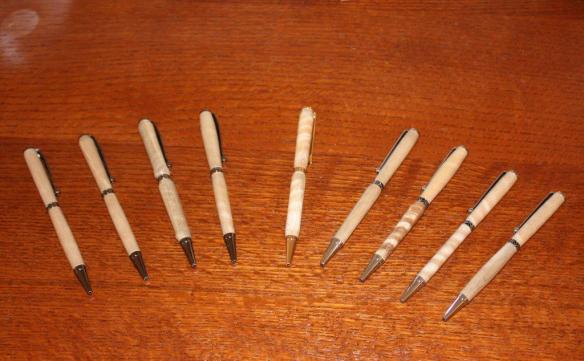
These are the finished pens ready for sale. Salvaging beautiful pieces of wood from the firewood pile and turning them into functional works of wood art is a source of pride for me.
My first pens were sent to Japan for sale. My very good friend, Yuya, wanted to test market them on a website in Japan. It is such a deep and emotional feeling for me to know that wood that I had salvaged from my firewood pile has been turned into something as useful and beautiful as a pen. Now my pens and wood will live on and be used by someone as far away as Japan. Watts Tree Farm is truly reaching around the world. First through the blogs I have written but now even the wood grown here will find new homes and hopefully the story will travel with each pen.
This adventure is opening up my mind to more ideas. I think I’ll stick to pens from the forest for now but I am thinking about what other woods could I use. Trees or shrubs that are never gathered commercially, could have something beautiful inside. A story of inner beauty waiting to be shown and told. The story of Watts Tree Farm is a never ending story. One of new discoveries every day. Of discovering not only about the woodlot…but about myself and the spirit of the forest.
Until next time, keep safe and well.
*** Click on any photograph to get a larger image. ***





